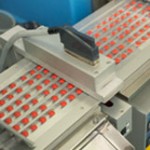 With the changing regulations in the healthcare industry, opportunities abound for new entrants and so do potential pitfalls. To make the right investments and reduce risks, many companies are expanding lines or buying existing facilities. Consolidation and acquisitions are appealing not just because of the speed to market, but also because they eliminate the risks associated with starting up a new process. With new products, an aggressive goal will only be met if the project is properly managed from conception to market delivery.
With the changing regulations in the healthcare industry, opportunities abound for new entrants and so do potential pitfalls. To make the right investments and reduce risks, many companies are expanding lines or buying existing facilities. Consolidation and acquisitions are appealing not just because of the speed to market, but also because they eliminate the risks associated with starting up a new process. With new products, an aggressive goal will only be met if the project is properly managed from conception to market delivery.
Sometimes, creating lines for new products is either the best or the only option available. For those who want to be a leader in the industry, there are competitive advantages in creating a process from scratch. The ability to use the latest technologies and knowledge in manufacturing medical devices can lead to greater efficiency or robust operations.
Every industry wants to have a very tight manufacturing process, but in the medical device industry, the consequences of not having everything nailed down before production starts is much higher. You want to have most of the time spent on a mock FAT (Factory Acceptance Test) through simulation and Validation – the demonstration of the standardized process – prior to hitting the plant floor.
Planning with flexibility
Integrating new lines for medical device products into a current production facility requires tighter automation, quality control, and track and trace components to meet FDA requirements and validation procedures. Being good at manufacturing one product, doesn’t necessarily translate into success in the medical device sector using the same processes. When integrating and commissioning a line, having a strong project execution model is critical. Organizations more familiar with daily operations may not recognize all of the requirements and challenges that can emerge while planning, simulating and validating a new line for medical device.
Medical device manufacturing requires a much higher degree of automation for consistency and quality control and a high degree of manufacturing data. Having standardized procedures and validation is critical to effective product manufacturing process. If processes aren’t in place for addressing challenges when they arise, you might miss your window to meet the market launch date.
Technology transfer and manufacturing training
When a line is commissioned, the tendency is to focus on non-human factors such as system performance, but underestimating the importance of the human interface in the manufacturing process can be a costly error. Operators play a valuable role in controlling the cost and quality of manufacturing, so a key component of any medical device startup is the workforce development from the project team to the operations team through formal training. Starting a line without having everyone on board has the potential to result in a process that fails to meet FDA regulatory requirements.
Bringing a new medical device to market requires the expertise to help meet your goals. Knowing how to deliver a robust system will lower your risks and help you lead the market as planned.
3 Keys to Medical Device Manufacturing Success
 Medical device manufacturing is different from other manufacturing due to the high levels of manufacturing quality control and increased cost. The stakes are high for the device patient and the manufacturer. Medical devices require a high degree of quality control to positively impact the health and well being of patients. Yet, medical device manufacturers still need to manage the cost of manufacturing to bring products into the market with continued success. The continuity of the business rests in the balance between quality control and cost control.
Medical device manufacturing is different from other manufacturing due to the high levels of manufacturing quality control and increased cost. The stakes are high for the device patient and the manufacturer. Medical devices require a high degree of quality control to positively impact the health and well being of patients. Yet, medical device manufacturers still need to manage the cost of manufacturing to bring products into the market with continued success. The continuity of the business rests in the balance between quality control and cost control.
There are three key considerations to controlling costs during medical device manufacturing: 1) well defined product specifications, 2)a predictable manufacturing process, and 3) detailed data collection.
1) Product Specifications
Understanding the characteristics of product’s material can help develop manufacturing specifications. These specifications determine the proper tooling, the degree of accuracy of control and inspection equipment necessary to deliver a robust manufacturing process. Production rates and efficiency requirements are all taken into consideration when specifying equipment. Does the placement of the product component need to be within an eighth of an inch for assembly or is a tolerance more precise required? How thin can a product’s wall be formed before there is functional failure? Is the manufacturing environment located within a classified hazardous zone? How does the product need to be packaged to prevent damage or contamination?
2) Predictable Manufacturing Process
Medical devices receive intense regulatory scrutiny in the manner in which they are manufactured and packaged from the Food and Drug Administration (FDA). FDA regulations require robust validation protocols to prove a process is predictable, repeatable and well controlled. This step is a requirement before any actual production can begin. An out of tolerance process can disrupt an entire product launch due to failed validation protocols. This is where an automated control system provides its value. A well integrated system will greatly increase the repetitive function, measurement and inspection of the process. Imagine a camera system not only capable of detecting the presence of a part, but also keeping an accurate count of the number of pass/fail parts. How valuable is it to know that amount of adhesive utilized daily in production of a device?
3) Detailed Data Collection
In a regulated production environment, having clear reports and records of the process is just as important as the control functions. Data collection encompasses may process metrics that will tell the story of how the process is performing as well as provide historical records. When was the device produced? What were the temperatures of the liquids in the process and the associated cure times? If there is a product out of spec product, tracking and diagnosis of the issue will be much faster with an integrated data collection system. Quick diagnostics equates to less downtime and improved efficiency.
In order for a new medical device manufacturing line to startup successfully, proper considerations and decisions during the product planning stages must occur. Once the line is in production, control and proper record keeping methods must be demonstrated.



